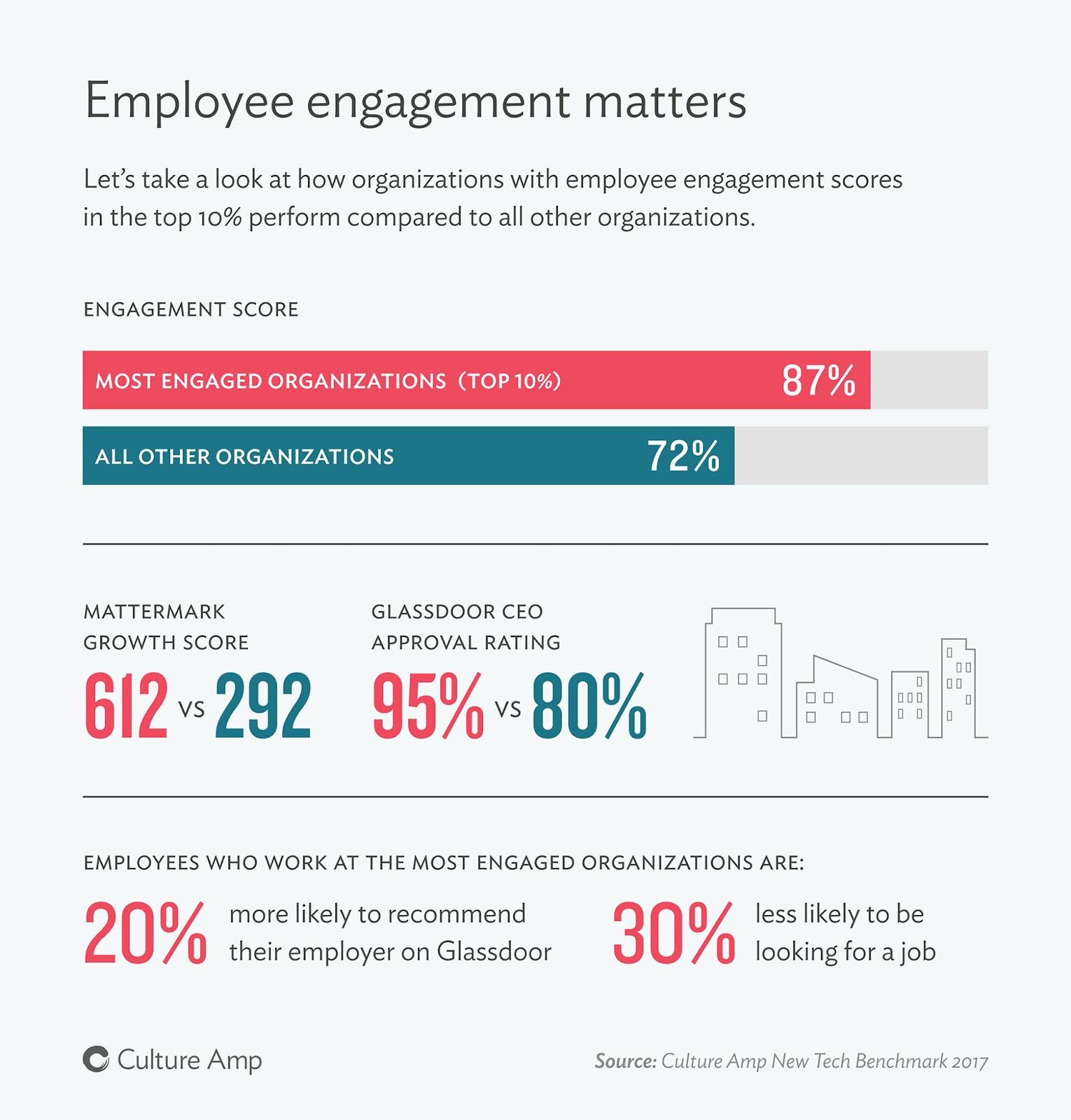There has always been data supporting the impact of employee engagement on the bottom line. Even so, some organizations thought they could get by ignoring it.
Maybe they could attract employees regardless of the fact their culture wasn’t right. And maybe they could afford to replace them when they inevitably churned.
Also read: Accountability in the Workplace and How it Ties into Employee Engagement
No matter how much money an organization has, a poor culture creates reputation risks that can be insurmountable. It’s no longer enough to build a successful company — it needs to be built right, with the right culture, too.
It seems that every week we see successful companies stumble — and some fail — because they put profit, speed,or something else before culture, before people. Nurturing employee engagement and culture sets organizations up for the marathon, not just the sprint.
Growth done right
For every bad news story we hear, there are ten other organizations focusing on getting their culture right.
They’re conducting the research they need to understand what motivates the people they work with. They’re taking action to improve engagement, and regularly measuring the results. And they’re reaping the rewards. We’re proud to work with organizations like Slack, Vend, Airbnb, and many more who are leading the way.
In our latest report, What New Tech employees need; Insights for driving engagement and retention, our analysts discovered that organizations that have the top 10 percent of engagement scores also excel in other areas of business.
Here’s how companies with the the top 10 percent of engagement scores compare with the rest of the New Tech organizations that made up the report sample:
Engagement and the bottom line
Our report found that New Tech companies that have engagement scores in the top 10 percent had an average Glassdoor CEO rating of 95 percent — 15 percentage points higher than the overall average.
The gap between Mattermark Growth Scores is even more pronounced — because growth scores can be negative — with organizations in the top 10 percent having an average score of 612 against 292 for everyone else.
More and more, CEO approval and Mattermark scores are important numbers for incoming investors and existing boards.
Also read: Engagement in the workplace – How to measure your ROI
Recruitment is a significant cost for all organizations, but it’s especially impactful in growing organizations that are almost constantly hiring. People working at the most engaged New Tech companies are 30 percent less likely to be looking for a new job, according to our research.
What’s more, they’re more likely to recommend their organization — in fact, they’re 20 percent more likely to recommend their workplace on Glassdoor.
The world’s most innovative organizations know culture is an essential ingredient in growing and transforming their businesses. The above metrics are just the tip of the iceberg in understanding the impact of culture on the value and resilience of an organization.
In the coming six months, Culture Amp is focusing even more on how we can enable organizations to put culture first. We’ll be conducting and publishing more research, improving our platform, and connecting with people geeks all over the world. If you’d like to read the full New Tech report mentioned above, you can get a copy here.
Download the eBook and get practical ideas on designing employee engagement activities for your team!
About the author:
Didier Elzinga is the CEO and co-founder at Culture Amp, the world’s most powerful employee feedback and analytics platform.
Image licensed from Depositphotos.com







Leave A Comment